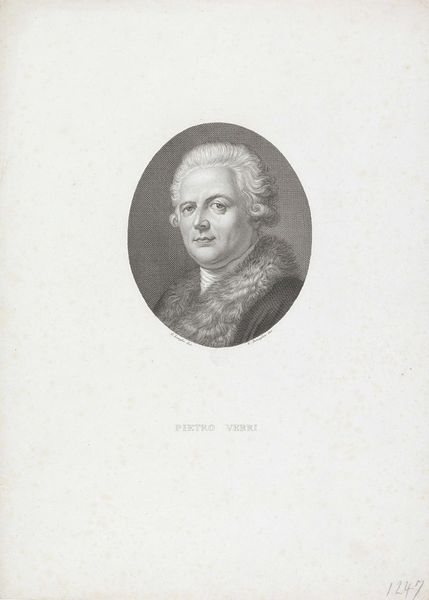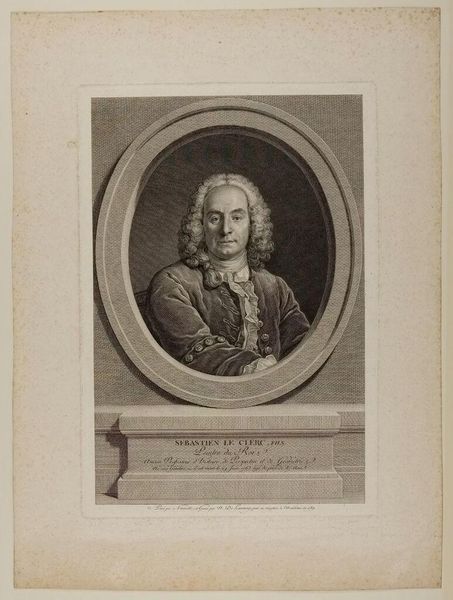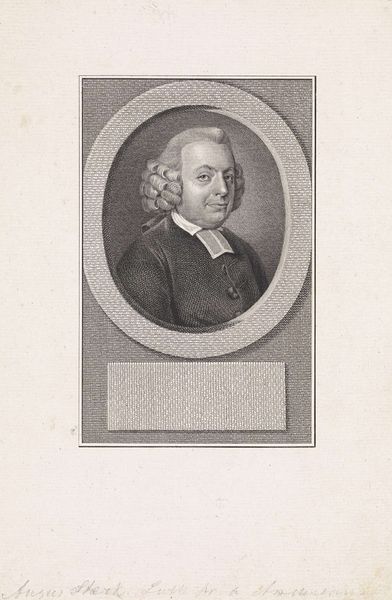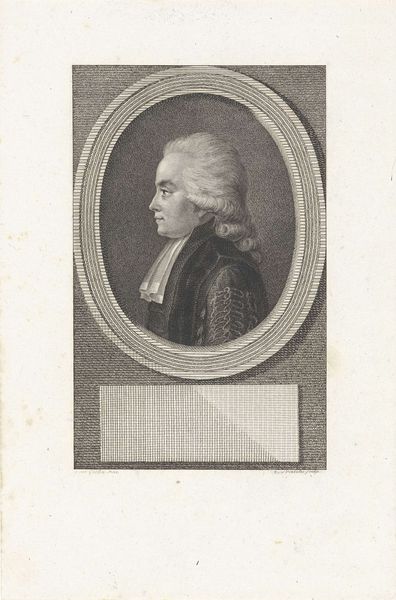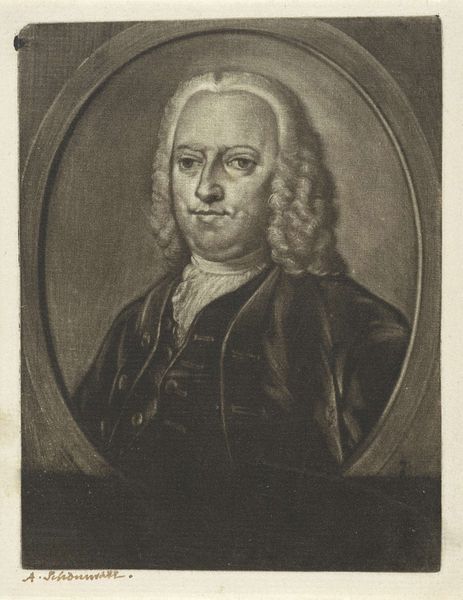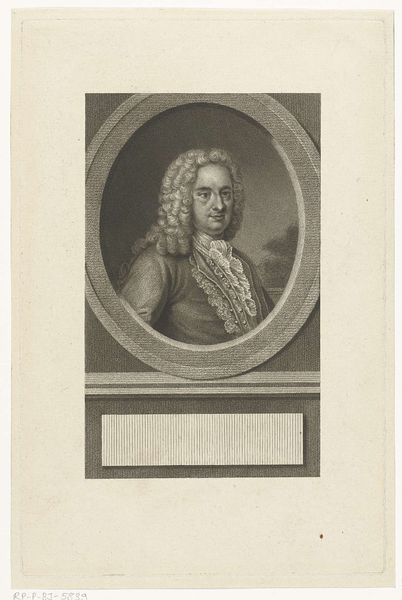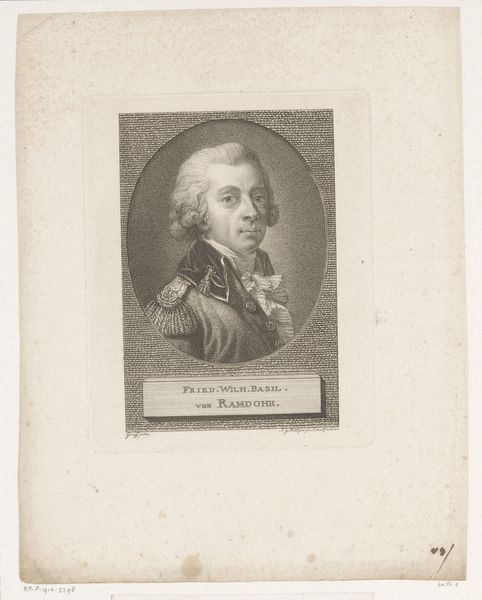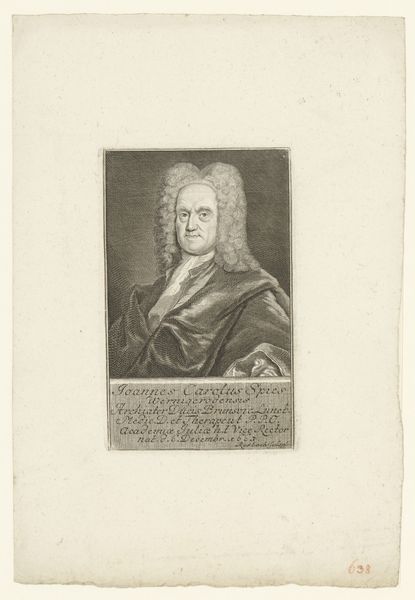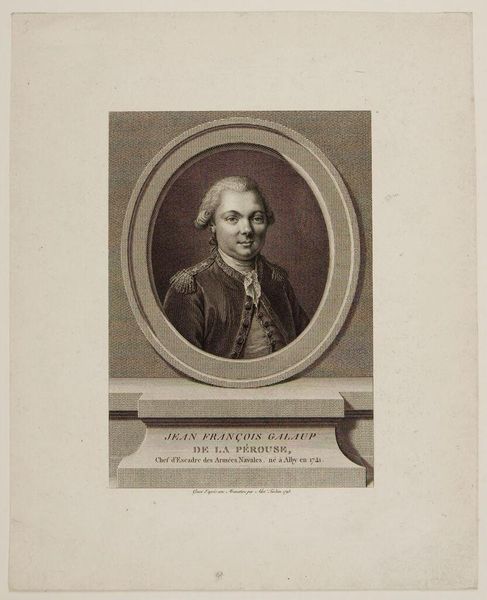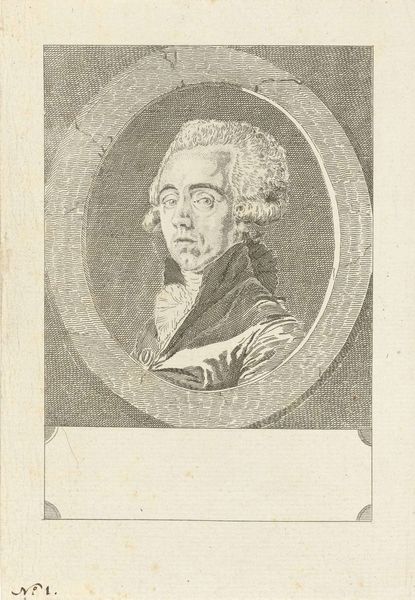
print, engraving
#
portrait
#
neoclacissism
#
aged paper
# print
#
old engraving style
#
engraving
#
realism
Dimensions: height 337 mm, width 232 mm
Copyright: Rijks Museum: Open Domain
Editor: So, this is "Portrait of Scipione Maffei" by Pietro Anderloni, created sometime between 1795 and 1849. It’s an engraving, so a print. It feels quite formal, almost…stately. What strikes you about this print? Curator: Well, let's consider the labor involved in creating an engraving like this. Each line, each curve, meticulously etched onto a metal plate, demands incredible skill and time. And consider who would have consumed this image? Editor: I see what you mean! Probably other elites, those who could afford it? Curator: Exactly. This isn’t just a portrait; it’s a product of a very specific economic and social system. How does the act of printing, this method of reproduction, influence its perceived value, considering this period's attitude toward labor? Editor: I suppose the print makes it more accessible. But at the same time, owning the portrait still represents status. The materiality, the paper and ink...were those costly materials at the time? Curator: Indeed. Fine paper and quality inks represented an investment. And the act of collecting such prints? A display of wealth and erudition. Furthermore, consider the role of the engraver – a skilled artisan, often working on commission. Was this engraver esteemed, and were they properly compensated? We will not know without archival research on this particular artist and work. Editor: So, looking beyond the image itself, we're actually seeing a reflection of production and consumption. Fascinating! It adds so much depth to it. Curator: Precisely. Understanding the means of production allows us to move beyond a superficial reading. I invite our listeners to think, whose story isn't being told? Editor: This has definitely broadened my perspective; I won’t look at prints the same way again! Curator: As for me, it made me consider the social commentary we can derive from this image and similar works from this period.
Comments
No comments
Be the first to comment and join the conversation on the ultimate creative platform.
